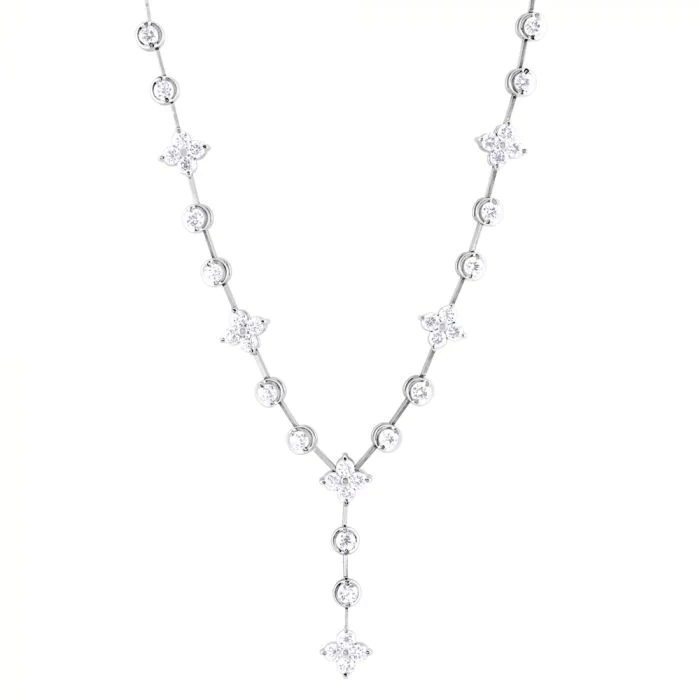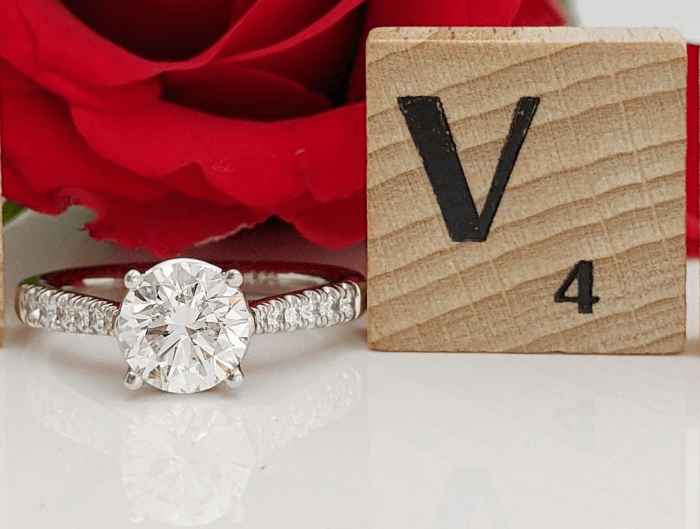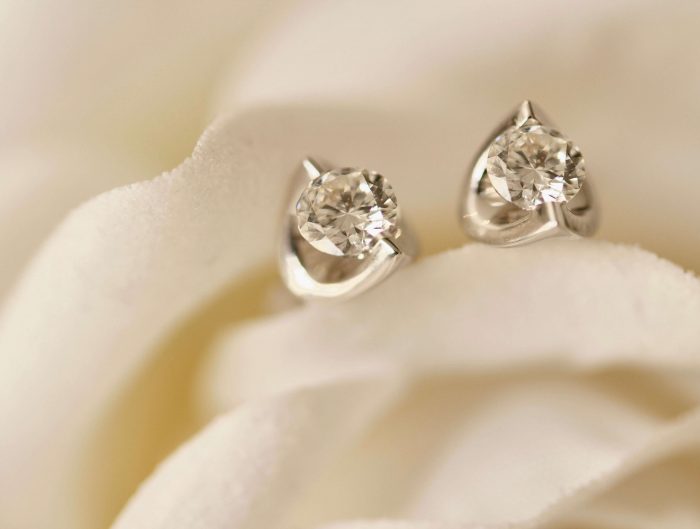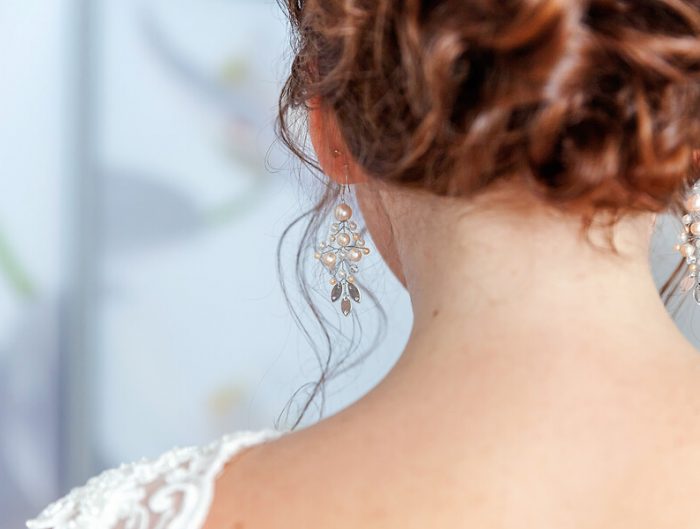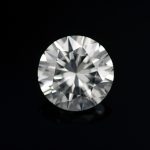Diamonds are known for being the centrepiece in many varieties of jewellery. The sought-after gem comes in different shapes and sizes, which makes some more costly than others.
In this blog post, we will focus on what a diamond cut is, why it is important and how it can impact the price.
What is a diamond cut?
A diamond cut refers to how well a diamond is cut and polished. Additionally, it focuses on how the diamond is proportioned, its depth, and its symmetry.
How is a diamond cut?
Before a diamond ends up as part of impressive jewellery, it is cut and shaped. Diamonds are one of the hardest materials in the world, so the tools used to cut them are usually diamond bladed or have a diamond edge.
The five stages of the diamond cutting process are listed below.
Planning
Planning is one of the most critical steps in this process. A diamond cutter will use their expert knowledge and computer software to map individual diamonds.
Cleaving
Then, a diamond cutter will split a rough diamond, cutting it into several pieces. Usually, this will be done with contactless lasers or mechanical saw. The cutter must ensure to cleave along the diamonds tetrahedral plane, which is where it is weakest.
Bruting
Bruting, which is also known as cutting or girdling, is the step that carves the diamonds into their well-known shapes. The diamonds are placed to grind against each other on a spinning axle to create a rough finish.
Polishing
Polishing involves creating the pavilions, crowns, cutets and facets of the diamond. Usually, the cutter will place the stone into a rotating polishing wheel coated with an abrasive diamond powder. The powder smoothes the diamond as it is pressed against the wheel.
Inspecting
The diamond inspecting process is fundamental. It involves thoroughly examining the diamond to ensure it meets specifications. Once it has passed all inspections, it will be passed on and sold.
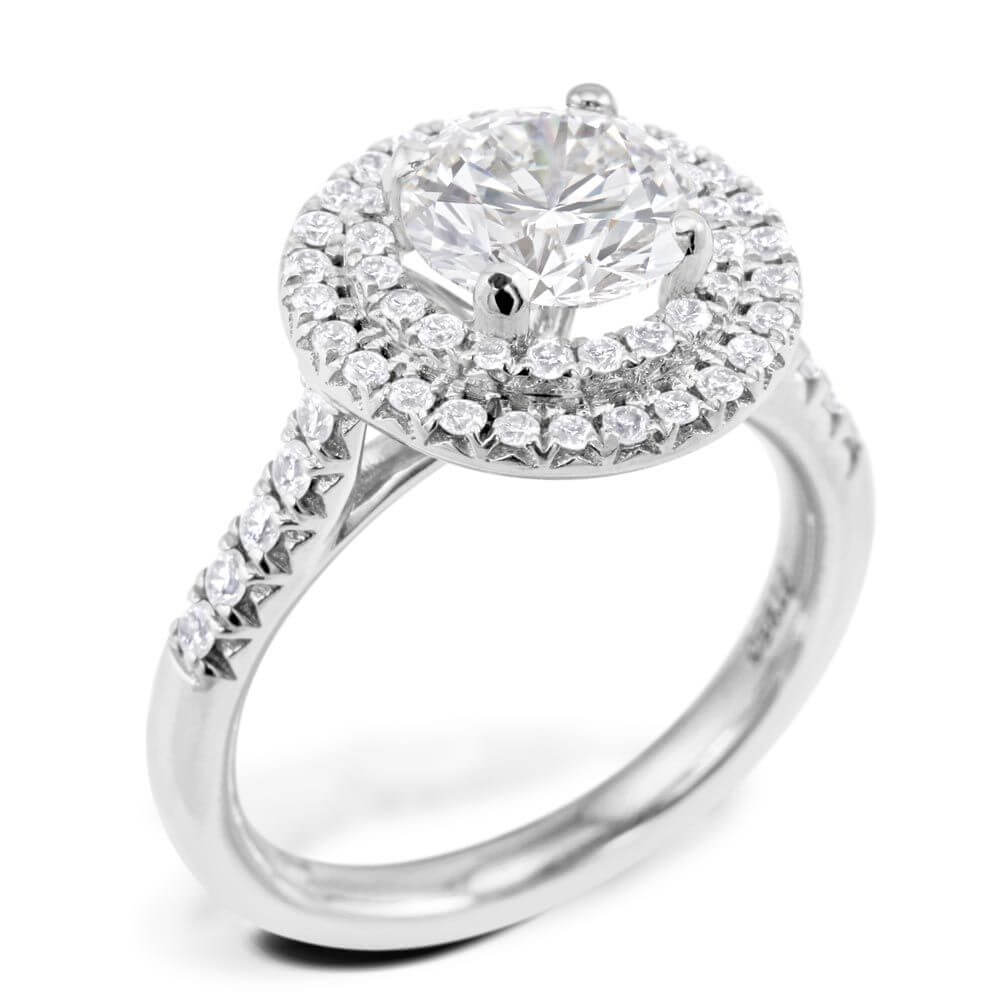
Platinum 2.04ct Round Brilliant Cut Diamond Engagement Ring With Double Diamond Halo And Diamond Set Shoulders
Why is a diamond cut so important?
Different cuts impact the appearance and perceived beauty of the stone. For example, if a diamond is well cut, it reflects white light and has a brilliant and luminous appearance.
If a diamond has a lower standard cut, it can appear dull. Ultimately, the cut quality impacts the beauty, appeal, and value of a diamond.
What are the different types of diamond cuts?
The GIA (Gemological Institute of America) has a grading system that applies to standard round brilliant cut diamonds and all clarities across the D-to-Z colour range.
As mentioned, a well-cut diamond is bright and can show a pattern with a contrast between light and dark areas. This results in reflections appearing crisp. The GIA has created five cut grades:
- Poor (P)
- Fair (F)
- Good (G)
- Very good (VG)
- Excellent (EX)
If a diamond has a Poor cut grade, it will appear dull and have many dark areas. Conversely, if a diamond has a Good cut grade, it will be quite bright but still have a dullness to the stone.
Now, if a diamond has an Excellent cut grade, it will be exceptionally bright. There will be an even pattern with significant contrast between light and dark areas, with crisp and well-balanced reflections.
Is there a difference between diamond cut and diamond shape?
Often, people can confuse the cut and shape of a diamond as being the same thing. The names linked with the shapes of diamonds are listed below:
- Round brilliant
- True
- Princess
- Cushion
- Emerald
- Oval
- Pear
- Heart
The cut refers to multiple aspects of the diamond that impacts the quality, whereas the shape is only the outline.
What is considered the “best cut” for a diamond?
In the GIA grading system, Excellent (EX) is the best possible cut for a diamond. Diamonds that have a cut of such a high standard are notably reflective and have an impressive brilliance.
For example, the 18ct White Gold 0.50ct Diamond Flower Cluster Necklace has brilliant cut stones that capture the light, which reflects on the 58 facets of each individual diamond.
Diamonds are regularly used in engagement rings, which is the perfect opportunity to purchase a high-quality cut diamond. The Platinum 2.54ct Round Brilliant Cut Diamond Engagement Ring with Halo and Diamond Set Shoulders is a prime example of this. The brilliance and clean cut of this diamond is immediately noticeable.
How do different diamond cuts affect the price?
Inevitably, the higher the quality of diamond cut, the higher the price. With diamonds, the main factors affecting the price are the four Cs, which refers to the following:
It is often argued that cut is the most critical of the four Cs. Many aspects of a diamond cut can impact the price — for example, the proportions, symmetrical facets, brilliance, fire, scintillation, and finishing details are but some.


